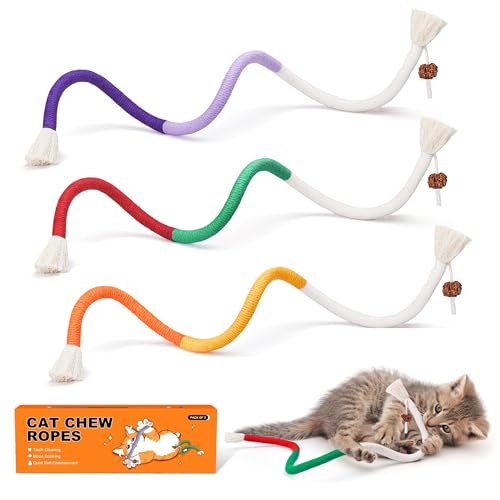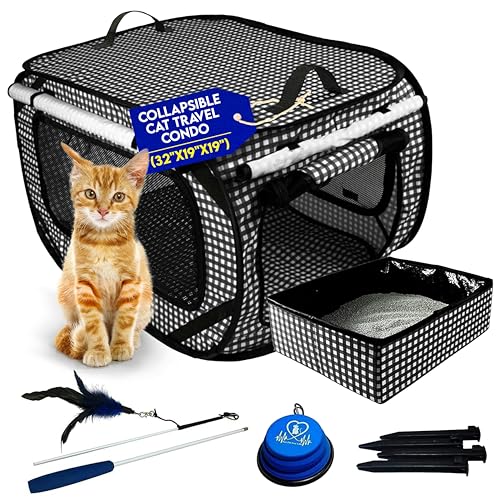Traveling with your cat can be a wonderful experience, but it’s not always easy. To ensure a safe and stress-free trip, you’ll need to plan ahead and make sure you have all the necessary gear, from carriers and crates to litter boxes and food. In this article, we’ll provide you with a comprehensive cat travel checklist and share tips and advice for preparing your feline companion for the journey. Whether you’re traveling by car or plane, domestically or internationally, read on to learn everything you need to know to make your cat’s next adventure a success!

Cat Travel Essentials: Carrier, Crate, and More
Are you ready to proceed with your request and provide all the requested information?
Tips for Preparing Your Cat for Travel
Traveling with your furry companion can be a wonderful adventure, but it’s important to take the time to prepare your cat so they feel safe and comfortable during the journey. Here are some tips to help you prepare your cat for the trip:
Get Familiar with the Carrier
If you plan on using a carrier, it’s important to have your cat get familiar with it beforehand. Leave the carrier open in your home and encourage your cat to explore it. Place treats and toys inside to make it more inviting. This will help your cat feel more comfortable when it’s time to travel.Practice with Short Trips
If your cat isn’t used to traveling, start by taking them on short drives to build up their tolerance. This will help them get used to the sensation and reduce the risk of motion sickness. Gradually increase the length of the trip until they are comfortable traveling for longer periods of time.Familiarize Them with the Car
Before you hit the road, allow your cat to explore the car while it’s parked. This will help them get accustomed to the environment and reduce stress levels during travel. You can also place a blanket or towel with their scent in the car to make it feel more familiar.Pack Their Essentials
Make sure to pack all of your cat’s essentials for the trip. This includes food, water, litter box, litter scoop, medication, vet records, health certificate, and toys to keep them occupied. Remember to bring more than enough supplies in case of any unexpected delays.Use a Comforting Scent
Cats are very scent-oriented animals, so it can be helpful to bring an item with a comforting smell from home. This could be a blanket, toy, or even a piece of clothing with your scent on it. This will help your cat feel more secure and at ease during the trip.
By following these tips, you can help prepare your cat for a safe and stress-free journey. Remember to be patient and understanding during the preparation process, as some cats may take longer to acclimate. With the right preparation, you and your furry companion can enjoy the adventure of traveling together.
Making Travel Arrangements: Choosing Pet-Friendly Transportation and Accommodation
When planning to travel with your feline companion, it’s essential to make travel arrangements that will accommodate your pet’s needs. Whether you’re traveling by plane, car, or train, choosing pet-friendly transportation and accommodation will ensure a safe and stress-free trip for both you and your cat. Here are some tips for making travel arrangements:
Research pet-friendly accommodations: Before booking a hotel or Airbnb, make sure the place allows pets. Some accommodations may have restrictions on the size or number of pets allowed. Look for hotels or rentals that offer pet amenities such as pet bowls, toys, and beds. Also, consider the location of the accommodation and check if it’s near a park or a place where your cat can stretch its legs.
Choose cat-friendly transportation: If you’re planning to travel by plane, check the airline’s pet policy to ensure your cat meets the requirements for flying and to know what documentation is needed. Some airlines only allow pets in-cabin, while others require them to be checked as baggage. If you’re planning to travel by car, consider getting a cat carrier or crate that will keep your cat secure and prevent it from becoming a distraction. Additionally, make sure your cat is comfortable with the carrier or crate by introducing it to the carrier or crate a few weeks before your trip.
Pack cat travel essentials: When traveling with a cat, it’s crucial to pack everything your cat needs. Bring enough food and water for the duration of the trip. Also, bring a litter box and litter scoop, toys, medication, and vet records. If you’re traveling internationally, check the country’s requirements for bringing pets and make sure you have a health certificate and any necessary vaccinations.
Consider your cat’s comfort: Traveling can be stressful for cats, so it’s important to take steps to make them feel comfortable. Bring a familiar blanket or bedding item that smells like home. Additionally, a cat harness and leash can give your cat a chance to stretch its legs outside and explore safely.
By making arrangements that cater to your cat’s needs, you can ensure that your furry companion remains safe, comfortable, and happy throughout your travels.
Traveling by Car with Your Cat: Dos and Don’ts
When it comes to traveling with your feline companion, car trips are often less stressful and overwhelming compared to flying or taking the train. However, there are still some important considerations and precautions you need to take to ensure your cat’s safety and comfort during road travel. Here are some dos and don’ts:
Dos:
- Invest in a high-quality cat carrier or crate that is comfortable, spacious enough for your cat to move around, and secure enough to prevent escape or injuries in case of an accident.
- Don’t forget to put a comfy blanket or towel along with your cat’s favorite toy or treat inside the carrier to help them relax and reduce anxiety during the journey.
- Consider putting a litter box inside the carrier, especially for long drives, and train your cat to use it before the trip. If there’s not enough space, make sure to take frequent breaks to allow your cat to use the litter box and stretch their legs.
- Bring plenty of food, water, and treats for your cat, and feed them small portions throughout the trip to avoid overeating and throwing up. Make sure to pack spill-proof bowls and bottles and keep them within easy reach.
- Secure the carrier properly in the car to prevent it from shifting or sliding during sudden stops or turns. You can use a safety belt or straps or put the carrier in the back seat or trunk (if there’s enough ventilation and temperature control).
- Test your cat’s reaction to car rides before embarking on a long journey. Take short drives around the neighborhood or to a nearby park to see how your cat behaves and if they need any special care or attention.
Don’ts:
- Never let your cat roam freely inside the car, as they can get hurt, distracted, or lost. Always keep them inside the carrier or crate, no matter how well-behaved or trained they are.
- Don’t leave your cat alone in the car, even for a few minutes, especially in hot or cold weather conditions. Cars can heat up quickly and cause heatstroke or dehydration, or get too cold and cause hypothermia or frostbite.
- Avoid feeding your cat right before or during the ride, as this can trigger motion sickness and nausea. Also, avoid giving your cat any medication without consulting with your vet or following the dosage and the instructions carefully.
- Don’t expose your cat to loud noises, bright lights, or strong smells during the trip, as this can cause stress, anxiety, and sensory overload. Keep the car windows closed, use curtains or blinds, and avoid smoking or spraying perfumes.
- Never force your cat to travel if they are not feeling well or showing signs of illness, injury, or discomfort. Monitor your cat’s behavior and health throughout the journey and seek veterinary care if necessary.
By following these dos and don’ts and preparing your cat for the car trip, you can have a smooth and safe travel experience with your feline friend. Happy travels!
Flying with Your Cat: Airline Pet Policies, TSA Screening, and More
Flying with your furry friend can be a daunting experience for both you and your cat. However, with proper planning and preparation, it can be a manageable and even enjoyable experience. In this section, we will cover airline pet policies, TSA screening, and other aspects of flying with your cat.
Know the Airline Pet Policy:
Before booking your flight, it is important to make sure that your airline allows pets onboard. If they do, familiarize yourself with their policies and regulations regarding pet travel. These policies may vary depending on the airline, so be sure to double-check everything. Some airlines may require that pets travel in a specific area of the plane, while others may have size or weight restrictions.Contact the Airline in Advance:
It is recommended that you call the airline well in advance of your flight to inform them that you will be traveling with your cat. You can confirm that your cat meets all their requirements and reserve a space for them on the flight. Keep in mind that most airlines have a limit on the number of pets allowed on each flight, so book early to ensure a spot for your furry friend.Acclimate Your Cat to the Carrier:
If your cat is not used to being in a carrier or traveling, it is a good idea to familiarize them with the carrier before the flight. Leave the carrier out in the open for them to explore and get comfortable. You can also practice taking short car rides with your cat in the carrier to simulate the airplane ride.TSA Screening:
When going through the TSA checkpoint, you will be required to remove your cat from the carrier and place both the cat and the carrier through the X-ray machine. You can hold your cat during the screening process, but be sure to inform the TSA officer that you are traveling with a pet. Also, keep in mind that you may need to remove your cat from their carrier during the security check.In-Flight Essentials:
When flying with your cat, make sure you pack all the essentials in your carry-on luggage. This includes your cat’s food, water, litter box, and any necessary medications. It is also important to bring cat toys or blankets to make your cat feel more comfortable and relaxed during the flight.Choose a Direct Flight:
If possible, it is recommended that you book a direct flight when traveling with your cat. This will minimize the amount of stress your cat experiences by reducing the number of take-offs and landings, as well as transfers between flights.Final Tips:
• Do not sedate your cat before the flight unless advised by your vet.
• Attach a collar or harness with identification tags to your cat’s carrier.
• Bring all necessary vet records and health certificate for your cat.
• Check with your destination regarding any quarantine or pet regulations.
By following these steps, you can ensure that your cat’s flying experience is as stress-free as possible. Remember to plan ahead, pack appropriately, and make sure that your cat is comfortable and well-prepared for the journey. Safe travels!
International Travel with Your Cat: Health Certificates, Quarantine, and Other Considerations
Traveling internationally with a cat requires a bit more preparation and consideration than domestic travel. From obtaining necessary documents to navigating quarantine requirements, international cat travel presents unique challenges. Here is a guide to help you navigate the process and ensure a safe and stress-free trip for you and your feline companion.
Health Certificates and Other Documents
Before traveling internationally with your cat, you will need to obtain several important documents. Health certificates are often required by customs officials, airlines, and other authorities as proof that your cat is healthy and up-to-date on all necessary vaccinations. The requirements for health certificates can vary widely from country to country, so it is important to research the specific requirements for your destination well in advance of your trip.
In addition to a health certificate, you may also need to obtain a import/export permit, a microchip certificate, and other documents. Some countries require a waiting period between the time the health examination is conducted and the time of travel, so be sure to allow enough time to obtain all necessary documents.
Quarantine Requirements
Many countries require a period of quarantine for cats traveling from other countries in order to prevent the spread of disease. The length of the quarantine period can vary depending on the country and the health status of your cat. Some countries require quarantine at an approved facility, while others may allow quarantine in your own home or another designated location.
It is important to research the quarantine requirements for your destination well in advance of your trip, as failure to comply with these requirements can result in delays, fines, or even the quarantine or euthanasia of your cat.
Airline Policies and Travel Logistics
When traveling internationally with your cat, it is important to research the airline policies and procedures for pet travel. Some airlines have restrictions on the number and size of pets allowed in the cabin or in cargo, and may require additional fees and paperwork.
In addition to airline policies, you will also need to consider the logistics of travel with your cat. This includes ensuring that your cat has access to food, water, and a litter box throughout the journey, as well as making sure your cat is comfortable and secure in their carrier or crate.
Preparing Your Cat for International Travel
International travel can be stressful for cats, so it is important to take steps to prepare your cat for the journey. This includes gradually acclimating your cat to their carrier or crate, gradually introducing them to the sights, sounds, and smells of travel, and providing plenty of positive reinforcement and treats along the way.
In addition, it may be helpful to consult with your veterinarian about options for anxiety medication or other supplements that can help ease your cat’s stress during travel.
By following these tips and guidelines, you can help ensure a safe and stress-free international trip with your feline companion. Remember to also research cat-friendly accommodations and transportation options at your destination, and to pack plenty of cat travel essentials such as food, water, litter, and toys. Happy travels!
















